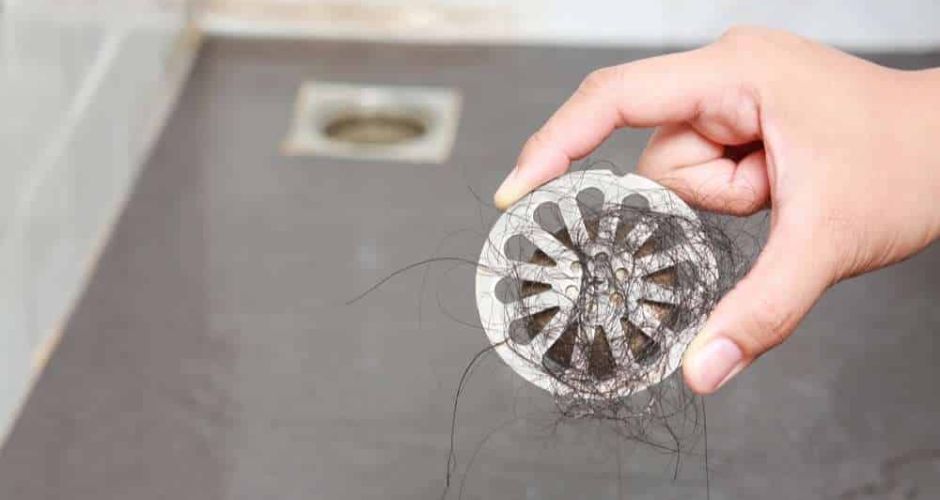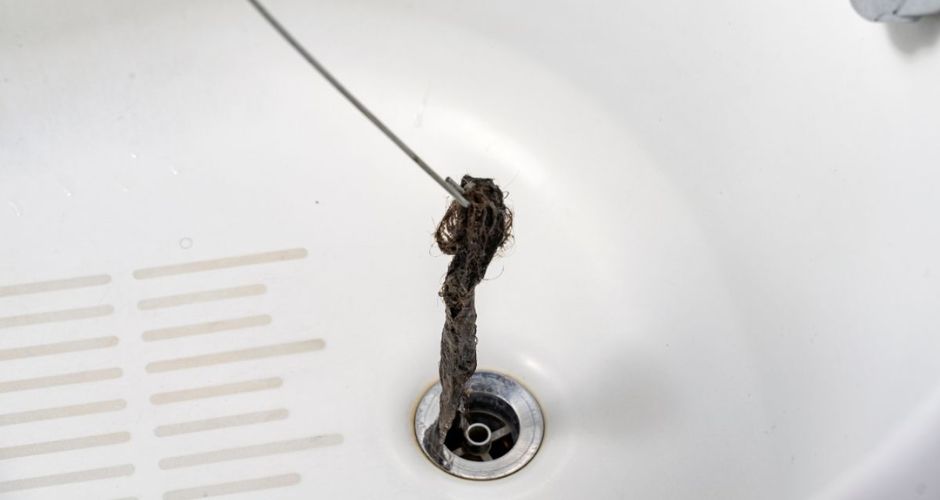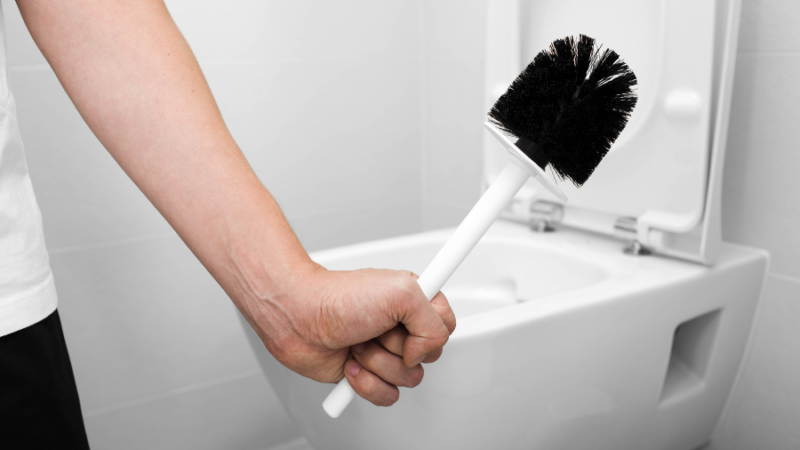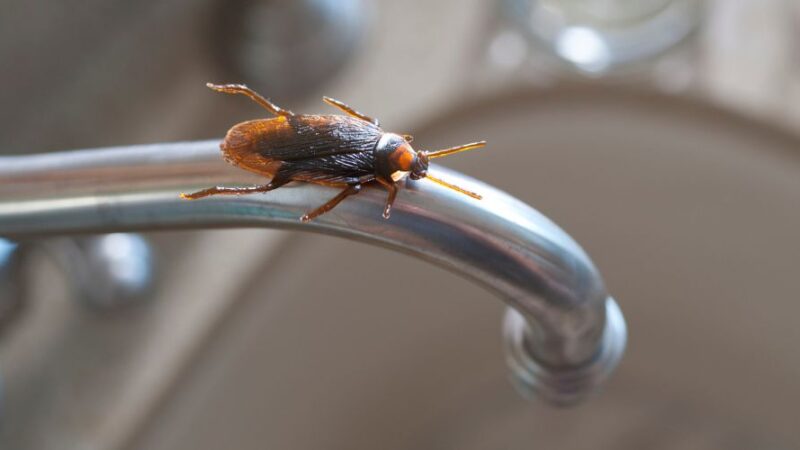How to Unclog a Bathroom Sink Clogged with Hair

A clogged bathroom sink is one of those little household annoyances that can quickly turn into a big frustration, especially when hair gets stuck in the drain. We’ve all been there: standing over the sink, watching water drain slower and slower, until one day it just stops completely.
The good news? You don’t have to panic or call a plumber just yet! There are plenty of easy, effective ways to unclog your sink from hair buildup, using everyday household items and simple techniques.
Let’s walk through the best ways to tackle the issue and keep your bathroom sink flowing smoothly.
Why Does Hair Clog the Sink?
Hair clogging the sink is completely normal. When we wash our hair, stray strands naturally fall out and get washed down the drain. Over time, these hairs mix with soap scum, toothpaste residue, and other debris, forming a sticky, tangled mess inside the pipes.
This buildup eventually slows down water flow, leading to a fully blocked drain. If left untreated, it can cause unpleasant odors and even damage your plumbing.
Related Articles:
- How to Remove Grease Stains from Clothes
- How to Remove Sweat Stains from White Shirts
- How to Clean Couch Cushions
- Why Is My Floor Sticky After Mopping?
- How to Remove Tough Stains from Carpet
- How to Clean Up Broken Glass Safely
Signs Your Sink is Clogged with Hair
Before your sink becomes completely blocked, watch out for these telltale signs:
✅ Slow drainage: Water takes longer than usual to go down the drain.
✅ Gurgling sounds: Air bubbles trapped in the drain create a gurgling noise.
✅ Unpleasant odors: A bad smell coming from the drain could mean trapped hair and debris are decomposing.
✅ Visible hair: Strands of hair are caught around the drain opening.
✅ Sink plunger stuck closed: If your plunger isn’t working, it could be because of a deep clog.
If you’re noticing any of these warning signs, it’s time to take action before the problem gets worse.

How to Unclog a Sink Clogged with Hair: Step-by-Step Solutions
1. Remove Visible Hair by Hand
Sometimes, the problem is right on the surface. If you can see hair near the drain, try pulling it out before moving to other methods.
Steps:
- Put on rubber gloves.
- Use tweezers or a wire hook to grab and remove as much hair as possible.
- Dispose of the hair properly to prevent it from going back down the drain.
✅ Pro Tip: If your hand gets stuck in the sink while pulling out hair, try lubricating it with soap or oil to free it.
2. Pour Boiling Water Down the Drain
Boiling water can help loosen and dissolve grease, soap scum, and minor hair clogs.
Steps:
- Boil a kettle full of water.
- Carefully pour the boiling water directly into the clogged drain in two or three stages, allowing each pour to sit for a few minutes before adding more.
- After pouring all the water, check if the drainage has improved.
⚠️ Caution: Be careful when handling boiling water to avoid burns or scalds.
3. Use Baking Soda and Vinegar
Baking soda and vinegar create a natural reaction that can help break down stubborn clogs caused by hair and other debris.

Steps:
- Start by removing any visible hair using your hands or tools.
- Pour half a cup of baking soda into the clogged drain followed by half a cup of vinegar.
- Cover the drain with a cloth or plug it tightly for about 30 minutes to allow the mixture to work its magic.
- Afterward, flush with hot water to clear away any remaining residue.
🔍 Note: You may need to repeat this process multiple times for tough clogs.
4. Try Using a Plumber’s Snake
If previous methods haven’t worked yet or if you suspect there’s an obstruction deeper down in your pipes (like tree roots), you might want to consider using a plumber’s snake—a flexible tool designed specifically for clearing drains.
Steps:
- Insert one end of the snake into your sink’s drain while keeping another hand on its handle.
- Push gently but firmly until you encounter resistance; then rotate clockwise while pushing forward until you break through whatever blockage exists.
- Pull out any gunk that’s been dislodged along with some additional slack from within pipes if possible (this will help prevent future build-up).
🧰 Tip: If you’re uncomfortable doing this yourself or unable/unwillingly access certain areas such as basement/crawlspace etc., don’t hesitate reaching out professional assistance instead!
5. Call A Professional Plumber
If none of these DIY approaches seem effective after several attempts, or worse still, if multiple fixtures throughout home are experiencing similar issues simultaneously, it might indicate underlying problems within plumbing system itself requiring expert intervention rather than mere cosmetic fixes like unclogging individual sinks/tubs etc., which only provide temporary relief at best!
FAQs
1. What if my hand gets stuck in the sink while removing hair?
Try lubricating your hand with soap or oil to wiggle it free. If it remains stuck, seek help immediately.
2. Can I vacuum out a hair clog?
Yes! A wet/dry vacuum can sometimes suction out the clog, but it’s not always effective.
3. How often should I clean my sink drain to prevent hair clogs?
Once a month, flush with hot water or a baking soda and vinegar solution.
4. What if I get stuck in the sink while trying to fix a clog?
Call for help and try to carefully wiggle out without forcing it.


